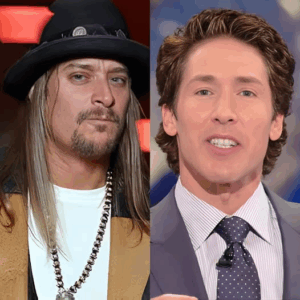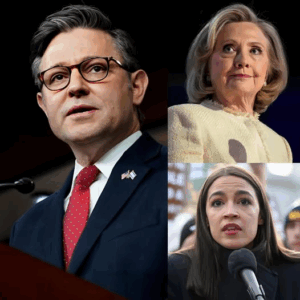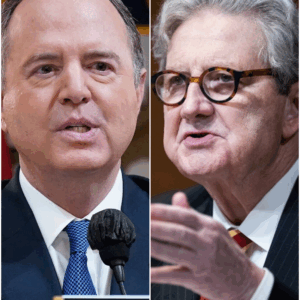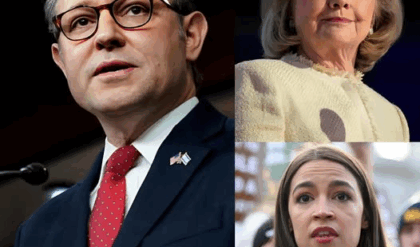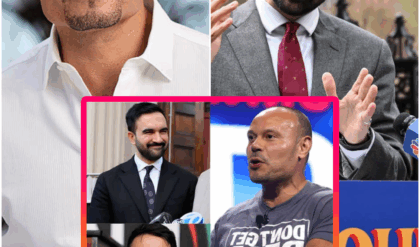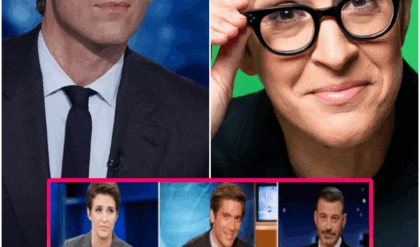Here’s the thing about Washington shockwaves: most of them are tremors dressed up as earthquakes. A press conference, a hashtag, a fundraising blast, and by Friday everyone has moved on to the next emergency. This week felt different. Johnny Joey Jones, a Marine veteran who has turned his second act into a straight-ahead media career, walked into the conversation about dark money and protest politics and tossed in something heavier than a talking point. He put RICO on the table. He put George Soros’s vast philanthropic orbit in the subhead. And he did it in a way that made the town sit up, not because it was loud, but because it was operational.
Jones’s pitch, boiled to its essence, is simple: if nonprofit networks are quietly funding protests that keep tipping into violence, the government shouldn’t have to watch from the sidewalk. He wants a framework to follow the money with real teeth—audits, emergency freezes, mandatory disclosures, the kind of tools normally deployed against mob crews and transnational scammers. The sales job is wrapped in his usual plain talk about duty and transparency. The subtext is sharper: if you’re laundering chaos through charitable paperwork, the IRS logo shouldn’t make you bulletproof.
You don’t have to buy his entire premise to understand the appeal. Americans have been marinating in a decade of “nonprofit industrial complex” discourse—the suspicion that 501(c) language and foundation grants conceal as much as they reveal. On one side, philanthropy as civic lifeline. On the other, philanthropy as force multiplier for ideologues with better accountants. Both can be true; often they are. Jones is betting that the country is ready to treat certain kinds of political funding the way we treat organized crime: as a pattern, not a pile of isolated incidents.
Let’s get the Soros piece out of the way. You can’t say his name without inviting a thousand preloaded arguments to the party. Supporters see him as a philanthropist who spends aggressively on democracy, criminal-justice reform, and open-society projects. Critics paint him as a donor with outsize influence who can tilt institutions by writing large checks where the rules are soft. Jones is careful—lawyerly, even—about this. His bill doesn’t accuse Soros of a crime. It doesn’t indict organizations. It creates investigative lanes and disclosure obligations. The politics, however, are not subtle. If you mention Soros near the words “RICO” and “anti-ICE riots,” you’ve chosen a battlefield where nuance typically dies.
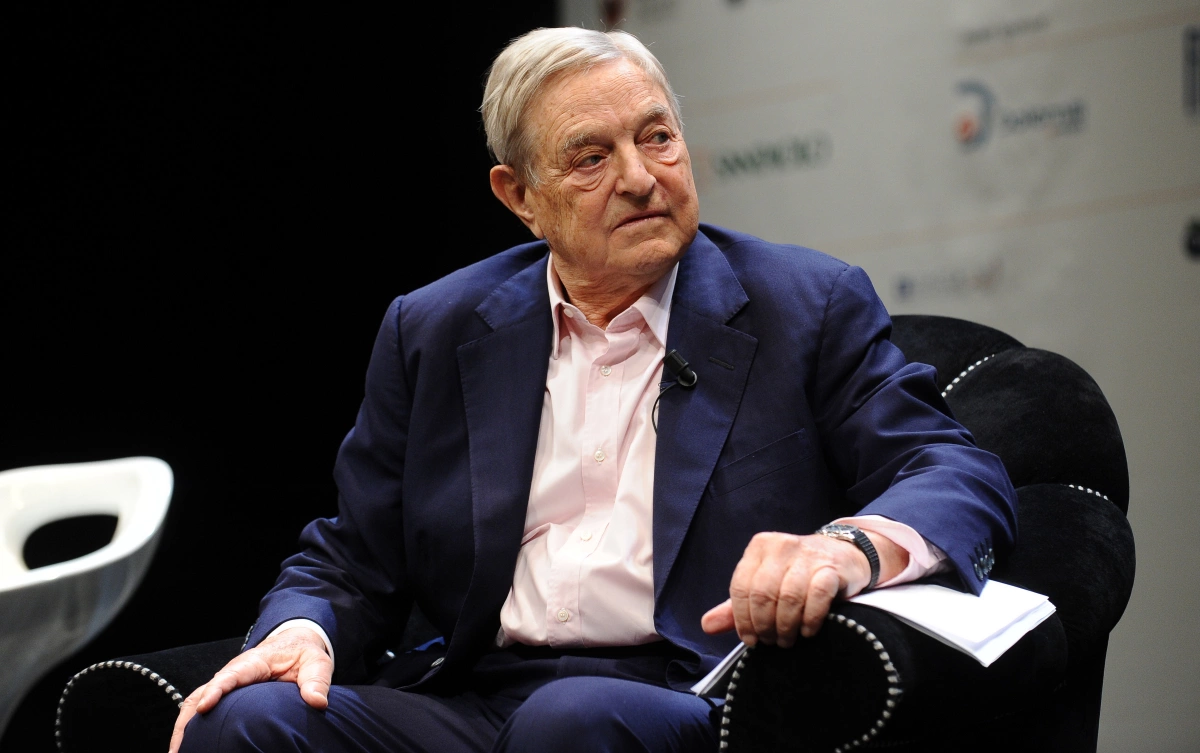
What makes the bill notable isn’t the rhetoric; it’s the mechanisms. The draft I’ve seen sketches four big moves.
First, it allows prosecutors to treat coordinated funding that intersects with violent unrest as potential racketeering. Not blanket criminalization of protest, Jones repeats, but a way to connect the logistical dots that convert lawful assembly into rolling street fights. In RICO terms, the “enterprise” isn’t ideology; it’s the network that moves cash, equipment, and instructions.
Second, it expands federal oversight of nonprofits and pass-through entities when there’s credible evidence of funding tied to violence. That means audits with scope, not form letters that die in a compliance inbox.
Third—and this is the part raising heart rates on K Street—it authorizes temporary account freezes during investigations. Not seizures, not forfeiture, but a pause button long enough to let investigators trace flows before the money evaporates into a lattice of subgrants and prepaid cards.
Fourth, it forces more sunlight on foreign-linked donors when the funds touch domestic political action that becomes violent. It’s the old national-security question in a new wrapper: if the street turns ugly, do we have a right to know whose money greased the skids?
Civil liberties lawyers, predictably and usefully, are sounding alarms. If you estrange the right to assemble by threatening the wallets around it, you can chill speech without ever touching a sign or a bullhorn. They worry about selective enforcement, about future administrations weaponizing a powerful tool against enemies of the moment. They also have history on their side: the federal government is not known for modesty once it gets a new hammer.
Jones knows that critique is coming; he invites it. His line is that the First Amendment protects speech, not violence, and that modern protest ecosystems place too much strategic distance between planners and their outcomes. When a march turns into a riot, everyone claims it was a spontaneous deviation. Maybe sometimes it is. But sometimes “spontaneous” is just the label you slap on a plan with no return address.
Is there evidence of a coordinated “paid protest empire”? Depends on your threshold. We’ve watched bail funds raise overnight fortunes, some of which helped secure release for people later charged with violent offenses. We’ve seen training kits, encrypted chat groups, travel stipends, and legal hotlines set up weeks in advance of “spontaneous” unrest. None of that is inherently criminal; some of it is civic hygiene. But the money pathways are so complex—and the reporting requirements so forgiving—that you can drive a flatbed truck of bad intentions through them without scraping the paint.
This is where the bill’s politics bite. Democrats will call it overreach dressed in patriotism. A number of Republicans will call it overdue housekeeping. The press will play its assigned roles: some outlets casting Jones as a watchdog, others as a censor with better branding. Meanwhile, the actual nonprofit world—the millions of people doing unglamorous work with small budgets and large spreadsheets—will brace for an administrative winter. If the bill passes intact, they’ll be asked to prove negatives on short deadlines while donors develop sudden allergies to risk.
I’ve spent enough years on this beat to know a few things. One, dark money isn’t a partisan sin. The tools of discretion are used by whoever can afford them, and morality tends to be retrofitted after the victory. Two, violence loves ambiguity. If a network can plausibly deny the last link in its chain, it will. And three, Washington’s appetite for clarity lasts exactly as long as it’s convenient. The same lawmakers railing against opaque funding on Monday will be headlining a super PAC dinner by Thursday.
So what would success look like here? Not a televised perp walk for a donor you hate. Not a morality play about “good protests” and “bad protests.” Success would be narrower and more boring: a verified investigative trail from dollars to directives to documented acts of violence, followed by consequences that land on the right shoulders. Success would also require guardrails that say, with force, that lawful assembly is not a pretext for surveillance bingeing. It’s a high bar. The bill, as drafted, climbs toward it. Whether Congress keeps that altitude is another matter.

Back to Jones. His political gift is the straight line. He doesn’t lard his case with grad-school vocabulary. He talks like a guy you’d want in the room when decisions are made quickly and revisited honestly. That doesn’t make him right; it makes him legible. In an era where so many proposals are reverse-engineered for cable segments, this one reads like something designed to be used, not merely brandished. The risks are obvious. So are the potential rewards.
One quiet tell: moderate staffers in both parties are reading the text instead of the tweets. They’re asking about standards for “credible evidence,” about time limits on freezes, about who adjudicates challenges when a nonprofit claims First Amendment cover. That’s how actual legislating begins—when the questions become technical. The lobbyists are, of course, already marshaling white papers warning of donor flight and philanthropic paralysis. They’re not wrong. Money is skittish. It hates process. It hates headlines even more.
And Soros? He’ll be fine. Billionaires don’t live or die by one bill. The more interesting question is what happens to the long middle of American civil society if Washington decides to treat certain protest-adjacent funding as an enterprise. Maybe the result is healthier: fewer shell groups, more plain-English disclosures, a culture that draws a harder line between peaceful advocacy and kinetic theater. Or maybe the result is colder: fewer donors willing to fund anything that might put them on a list, fewer scrappy groups able to respond fast when real injustices require speed.
That fork in the road is the real story, not the personalities. Jones has forced it onto the calendar. If the bill gets marked up, expect amendments that sand down the sharpest edges—judicial review for freezes, tighter definitions, sunset clauses. If it dies in committee, expect it to live as a pressure campaign, a way to make every grantmaker think twice before underwriting the logistics around street action.
Here’s my imperfect verdict after watching too many reform waves crash on the rocks: transparency that arrives with a badge and a subpoena tends to make people honest. It also makes them quiet. Maybe that trade is worth it. Maybe it isn’t. But it is a trade, and it deserves better than the usual spin-cycle.
Johnny Joey Jones didn’t float a press release. He rolled a live grenade into a room full of people who pretend the furniture is nailed down. The blast radius isn’t celebrity; it’s structure. If his bill becomes law, the nonprofit world will feel the vibration in its paperwork, its bank dashboards, its Slack channels. If it doesn’t, the conversation he forced will keep humming in boardrooms and back offices every time a protest calendar fills up and someone asks, Who’s paying for the buses?
Washington holds its breath for lots of reasons, most of them theatrical. This time, the pause sounds like calculation. Not fear, exactly. More like the recognition that somebody just proposed to measure what we’ve all preferred to gesture at. And once you start measuring, you have to live with the numbers.
News
The auditorium glitched into silence the moment Joel Osteen leaned toward the mic and delivered a line no pastor is supposed to say in public. Even the stage lights seemed to hesitate as his voice echoed out: “God will NEVER forgive you.” People froze mid-applause. Kid Rock’s head snapped up. And in that weird, suspended moment, the crowd realized something had just detonated off-script.
The crowd expected an inspiring evening of testimony, music, and conversation. What they got instead was one of the most explosive on-stage confrontations ever witnessed inside a church auditorium. It happened fast—36 seconds, to be exact.But those 36 seconds would…
The room stalled mid-breath the moment Mike Johnson snapped open a black folder that wasn’t on any official docket. Cameras zoomed. Staffers froze. The label on the cover — CLINTON: THE SERVER SAGA — hit like a siren. Johnson leaned toward the mic, voice sharpened enough to scratch glass, and read a line that made every timeline jolt: “Her email is criminal.”
Here’s the thing about made-for-TV government: it knows exactly when to hold a beat. Tuesday’s oversight hearing had the rhythm down cold—routine questioning, polite skirmishes, staffers passing notes like we’re all pretending this is not a stage. And then Mike…
🔥 “THE FLOOR SHOOK BEFORE ANYONE COULD SPEAK.” — Investigator Dane Bonaro didn’t walk into the chamber — he tore through it, slamming a blood-red binder onto the desk with a force that made the microphones hiss. The label on the cover froze the room mid-breath: “1.4 MILLION SHADOW BALLOTS.” He locked eyes with the council and snarled, “You want the truth? Start with this.” For one suspended second, every camera operator lifted their lens like they’d just smelled a political explosion.
Here’s a scene you’ve watched a hundred times if you’ve spent enough hours in hearing rooms and greenrooms: a witness with a flair for performance, a committee hungry for a moment, and a gallery of reporters quietly betting which line…
🔥 “THE SMILE FLICKERED—AND THE ENTIRE STUDIO FELT IT.” — Laura Jarrett walked onto the Saturday TODAY set with the kind of calm, polished glow producers dream of. Cameras glided, lights warmed, and the energy felt like a coronation. But right as she settled between Peter Alexander and Joe Fryer, something shifted — a tiny hesitation in her smile, the kind that makes everyone watching sit up a little straighter. And then it came: a voice from outside the studio, sharp enough to snap the broadcast in half. For a full second, no one moved.
Here’s the thing about TV milestones: they’re designed for easy applause. A new co-anchor takes the desk, the chyron beams, the studio lights do their soft-shoe, and everyone is on their best behavior. It’s a ritual as old as morning-show…
🔥 “THE ROOM STOPPED LIKE SOMEONE CUT THE OXYGEN.” — What’s racing across timelines right now isn’t framed as a speech, or an interview, or even a moment. It’s being told like a rupture — the instant Erika Kirk, normally armored in composure, let a single tear fall while standing beside Elon Musk. Witnesses in these viral retellings swear the tear didn’t look emotional… it looked inevitable, like something finally broke through her defenses. And when Musk turned toward her, the entire audience leaned in as if they already knew the world was about to shift.
It was billed as a calm forum on human rights—an hour for big ideas like freedom, transparency, and the obligations that come with having a public voice. The stage was washed in soft gold, the kind of lighting that flatters…
🔥 “THE ROOM WENT DEAD IN UNDER A SECOND.” — What unfolded inside the Senate chamber didn’t look like a hearing anymore — it looked like a trap snapping shut. Adam Schiff sat back with that confident half-smile, clutching a 2021 DOJ memo like it was the final move in a game he thought he’d already won. Staffers say he timed his line perfectly — “Your rhetoric ignores the facts, Senator. Time to face reality.” But instead of rattling Kennedy, something in the senator’s expression made even reporters lean forward, sensing the shift before anyone spoke again.
It didn’t look like much at first—another oversight hearing, another afternoon in a Senate chamber where the oxygen gets thinned out by procedure. Then Adam Schiff leaned into a microphone with a lawyer’s confidence, and John Neely Kennedy pulled out…
End of content
No more pages to load
